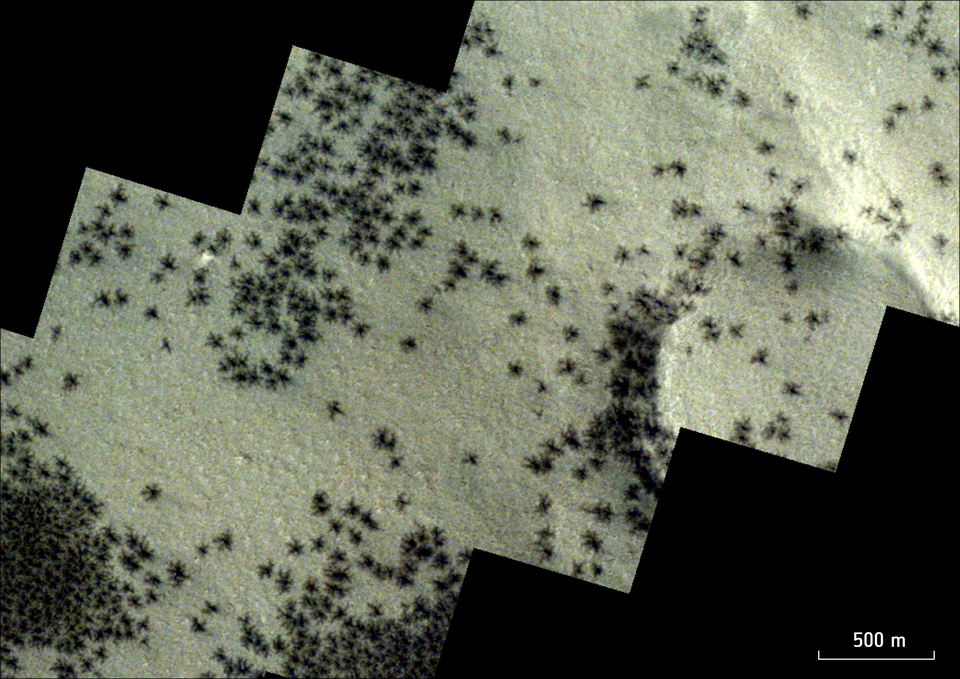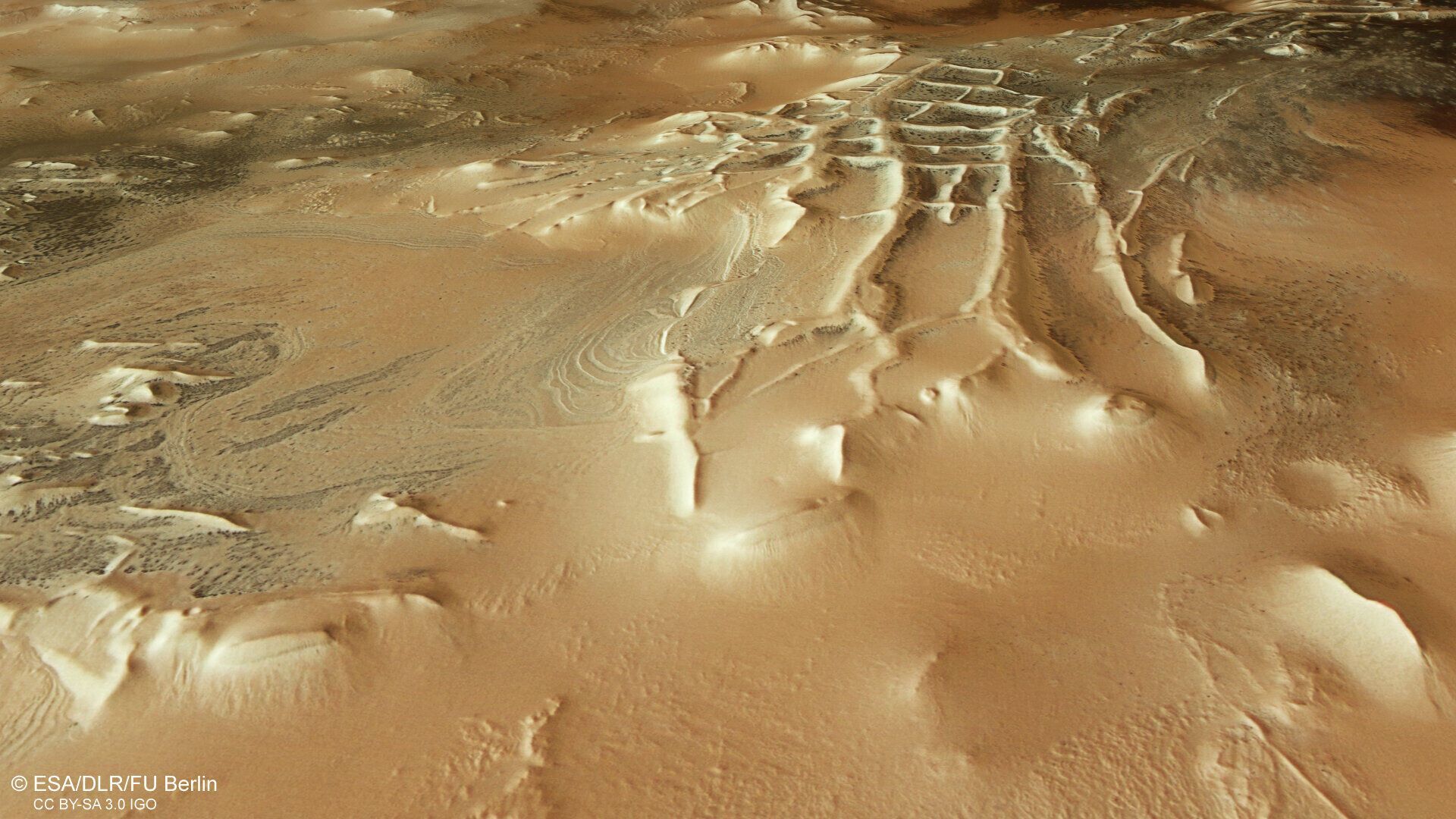News
Hundreds of black "spiders" discovered on Mars. Photo
Mars is being "attacked" by small dark specks, which is very similar to an invasion of spiders. In fact, they are formed as a result of the spring activity of the Sun.
The phenomenon was recorded by the European Space Agency's rover, ESA writes. The "spider effect" was caused by sunlight - it hit the layers of carbon dioxide that had been deposited during the dark winter months.
The sun's rays heat the carbon dioxide ice at the bottom of the layers and turn it into gas. This gas gradually accumulates and breaks through the ice sheets. When the Martian spring arrives, the gas bursts out and destroys the meter-thick ice layers.
Together with dust, the gas passes through cracks in the form of fountains or geysers, and then falls back down and settles on the surface. This creates dark spots from 45 meters to 1 km across. The same process creates characteristic spider-like patterns under the ice.
Another ESA rover, the ExoMars Trace Gas Orbiter (TGO), has captured the spiderweb-like patterns particularly clearly.
The Mars Express image shows dark spots on the surface formed by gas and leaking material, while TGO captures spider-like channels carved into the bottom.
These dark spots can be seen throughout the Mars Express image. The spiders appear to be crawling across high hills and sprawling plateaus. However, most appear to be small spots in the dark area on the left, which is on the outskirts of Mars - the City of the Incas. The reason for this name is not a mystery, because the linear, almost geometric network of ridges resembles the ruins of the Incas. More officially known as the Labyrinth of Angustus, the City of the Incas was discovered in 1972 by NASA's Mariner 9 probe.
The mysterious origin of the Inca City
We still don't know exactly how it was formed. Perhaps the sand dunes were fossilized over time. Or the material - magma or sand - seeped through cracks in the Martian rock. Or it could have been "eskers" - winding structures associated with glaciers.
The "walls" of the Inca City seem to trace part of a large circle with a diameter of 86 km. Therefore, scientists suspect that the "city" is located in a large crater formed as a result of a rock fall from space. This impact probably caused faults in the surrounding plain, which were then filled with rising lava and eventually eroded away.
Toward the middle of the image, the landscape changes slightly, with large rounded and oval swirls appearing, reminiscent of the marble effect. It is believed that the effect occurs when the layers are erased over time.
The image shows several prominent mounds and hills with flat tops over 1500 meters high. They were formed as a result of softer material being eroded over time by wind, water, or ice flows, leaving behind harder material. It forms these hills.
To the right (to the north) of the hills, the surface is covered with smooth, light-colored dust. On the plateau, you can see the traces of "spiders" scattered in various canyons and depressions, hiding among them.
Earlier, OBOZ.UA wrote about the opening of NASA's recruitment of volunteers to participate in the modeling of life on Mars.
Only verified information is available on the OBOZ.UA Telegram channel and Viber. Do not fall for fakes!






























